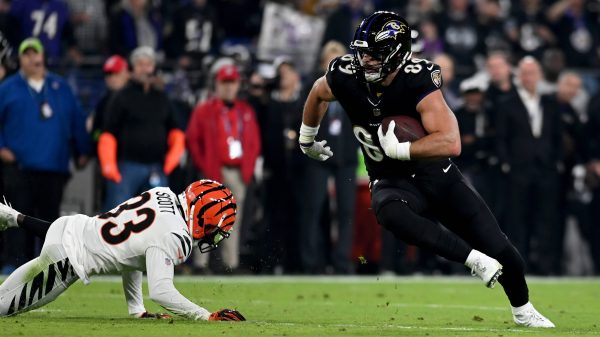Technology has become an integral part of modern American football, revolutionizing the way the game is played, coached, and experienced by fans. From wearable technology that tracks player performance to virtual reality training that enhances skills and decision-making abilities, the advancements in gridiron tech have had a profound impact on the sport.
The history of technology in football can be traced back to the early 20th century when the first film cameras were used to record games for analysis and scouting purposes. Over the years, technology has evolved and become more sophisticated, allowing for real-time analysis, player tracking, and even virtual reality simulations.
In today’s game, technology plays a crucial role in improving player performance, enhancing coaching strategies, and providing an immersive experience for fans. The use of technology has become so prevalent that it is now an essential part of the sport, with teams investing heavily in the latest advancements to gain a competitive edge.
Key Takeaways
- Gridiron Tech is revolutionizing American Football, from athlete performance analysis to injury prevention and broadcasting.
- Wearable technology is the future of athlete performance analysis, providing real-time data on player movements and physical exertion.
- Virtual reality training is enhancing player skills and decision-making abilities, allowing for immersive and realistic game simulations.
- Advanced analytics are providing coaches and players with real-time insights into the game, allowing for more informed strategy and performance decisions.
- Smart stadiums are enhancing the fan experience with technology, from interactive displays to mobile ordering and delivery.
Wearable Technology: The Future of Athlete Performance Analysis
Wearable technology has emerged as one of the most significant advancements in gridiron tech. These devices, such as GPS trackers, heart rate monitors, and accelerometers, are worn by players during practice and games to collect data on their performance.
The data collected by wearable technology provides valuable insights into player performance, allowing coaches and trainers to make informed decisions about training regimens, game strategies, and player development. For example, GPS trackers can measure a player’s speed, distance covered, and acceleration, providing coaches with objective data on their physical capabilities.
The benefits of wearable technology extend beyond player performance analysis. It also helps in injury prevention by monitoring factors such as heart rate and fatigue levels. Coaches can use this data to identify players who may be at risk of injury and adjust their training accordingly.
Virtual Reality Training: Enhancing Player Skills and Decision-Making Abilities
Virtual reality (VR) training has gained popularity in recent years as a tool for enhancing player skills and decision-making abilities. VR technology allows players to experience realistic game scenarios in a controlled environment, providing them with valuable practice opportunities.
In football, VR training can be used to simulate game situations, allowing players to practice their reactions and decision-making abilities. For example, quarterbacks can practice reading defenses and making split-second decisions on where to throw the ball. Wide receivers can work on their route running and catching skills against virtual defenders.
The benefits of VR training are numerous. It allows players to get more repetitions in a shorter amount of time, as they can practice without the physical demands of on-field training. It also provides a safe environment for players to make mistakes and learn from them without the risk of injury.
Advanced Analytics: Understanding the Game in Real-Time
| Metrics | Description |
|---|---|
| Conversion Rate | The percentage of website visitors who complete a desired action, such as making a purchase or filling out a form. |
| Bounce Rate | The percentage of website visitors who leave a site after viewing only one page. |
| Time on Site | The average amount of time visitors spend on a website. |
| Click-Through Rate (CTR) | The percentage of people who click on a link or advertisement compared to the total number of people who viewed it. |
| Cost per Acquisition (CPA) | The amount of money spent on advertising divided by the number of conversions. |
| Customer Lifetime Value (CLV) | The total amount of money a customer is expected to spend on a company’s products or services over the course of their lifetime. |
Advanced analytics has become an essential tool for teams and coaches in understanding the game in real-time. With the advent of technology, teams can now collect vast amounts of data during games, such as player movements, ball trajectory, and even biometric data.
This data is then analyzed using advanced algorithms and machine learning techniques to provide insights into player performance, team strategies, and opponent tendencies. Coaches can use this information to make informed decisions on play calling, substitutions, and game plans.
The benefits of advanced analytics are immense. It allows teams to identify patterns and trends that may not be apparent to the naked eye, giving them a competitive advantage. It also helps in player development by identifying areas of improvement and providing personalized training programs.
Smart Stadiums: Enhancing the Fan Experience with Technology
Smart stadiums have transformed the way fans experience football games. These technologically advanced venues are equipped with state-of-the-art features such as high-definition video screens, interactive fan zones, and wireless connectivity.
One of the most significant benefits of smart stadiums is the enhanced fan experience. Fans can now enjoy instant replays, live statistics, and interactive games on their smartphones or tablets. They can also order food and beverages from their seats and have them delivered directly, eliminating the need to wait in long lines.
Smart stadiums also provide teams with valuable data on fan behavior and preferences. This information can be used to tailor marketing campaigns, improve fan engagement, and enhance the overall game-day experience.
Injury Prevention and Recovery: The Role of Technology in Keeping Players Safe
Injury prevention and recovery have always been a significant concern in football. However, with the advancements in technology, teams now have access to tools and techniques that can help keep players safe and minimize the risk of injuries.
One such technology is the use of wearable sensors that monitor factors such as heart rate, body temperature, and hydration levels. This data can help trainers identify players who may be at risk of injury due to fatigue or dehydration and take appropriate measures to prevent it.
Additionally, technologies such as cryotherapy chambers, hyperbaric chambers, and cold compression therapy have become common in football training facilities. These tools help speed up the recovery process by reducing inflammation, promoting muscle repair, and improving circulation.
The benefits of technology for player safety are significant. It allows teams to monitor players’ health in real-time and take proactive measures to prevent injuries. It also helps in the rehabilitation process by providing players with access to cutting-edge treatments and therapies.
Player Tracking Systems: Improving Team Strategy and Performance
Player tracking systems have revolutionized team strategy and performance analysis in football. These systems use a combination of cameras, sensors, and algorithms to track player movements on the field accurately.
The data collected by player tracking systems provides coaches with valuable insights into player positioning, speed, acceleration, and distance covered. This information can be used to analyze team strategies, identify areas of improvement, and make informed decisions on player selection and substitutions.
Player tracking systems also help in scouting and talent evaluation. Teams can use the data collected during games to assess the performance of potential draft picks or free agents, allowing them to make more informed decisions.
The benefits of player tracking systems are immense. It allows teams to gain a competitive advantage by understanding their opponents’ tendencies and exploiting their weaknesses. It also helps in player development by providing objective data on their performance and areas of improvement.
5G and the Future of Broadcasting: Bringing the Game to Fans Anywhere, Anytime
The advent of 5G technology has the potential to revolutionize football broadcasting, bringing the game to fans anywhere, anytime. 5G networks offer faster speeds, lower latency, and higher capacity, allowing for seamless streaming of high-definition video and real-time data.
With 5G, fans can watch games on their smartphones or tablets with minimal buffering and lag. They can also access additional content such as live statistics, player profiles, and interactive features, enhancing their overall viewing experience.
For broadcasters, 5G opens up new possibilities for immersive storytelling and enhanced production value. They can use augmented reality (AR) and virtual reality (VR) technologies to provide viewers with a more immersive experience, allowing them to feel like they are part of the action.
Artificial Intelligence: Revolutionizing the Way Coaches and Players Approach the Game
Artificial intelligence (AI) has the potential to revolutionize the way coaches and players approach the game of football. AI algorithms can analyze vast amounts of data and provide insights that may not be apparent to human coaches or players.
In football, AI can be used for game planning, opponent scouting, and play calling. Coaches can use AI algorithms to analyze opponent tendencies, identify patterns, and develop strategies to exploit their weaknesses.
Players can also benefit from AI in their training and development. AI algorithms can analyze player performance data and provide personalized feedback and training programs to help them improve their skills and decision-making abilities.
The benefits of AI in football are immense. It allows teams to gain a competitive advantage by leveraging data and analytics to make informed decisions. It also helps in player development by providing personalized feedback and training programs.
The Future of Gridiron Tech: What to Expect in the Next Decade and Beyond
The future of gridiron tech is exciting, with numerous advancements on the horizon. One potential area of growth is the use of robotics and automation in player training and rehabilitation. Robots can be used to simulate game scenarios, providing players with realistic practice opportunities. They can also assist in the rehabilitation process by providing targeted exercises and therapies.
Another area of growth is the use of biometric sensors and artificial intelligence in player safety. Sensors can monitor factors such as heart rate, body temperature, and hydration levels in real-time, alerting trainers to potential risks. AI algorithms can analyze this data and provide recommendations for injury prevention and recovery.
Furthermore, advancements in virtual reality technology may lead to the development of fully immersive virtual stadiums, allowing fans to experience games from the comfort of their homes. This technology could also be used for remote coaching, allowing coaches to provide real-time feedback and instructions to players during games.
In conclusion, gridiron tech has had a profound impact on American football, revolutionizing the way the game is played, coached, and experienced by fans. From wearable technology that tracks player performance to virtual reality training that enhances skills and decision-making abilities, the advancements in technology have transformed the sport. As we look towards the future, we can expect even more exciting developments that will continue to shape the game of football.
Check out this article on FootballR.news about the Carolina Panthers signing cornerback Josh Norman. It’s an interesting development in the NFL, and it’s always exciting to see how teams are strengthening their rosters. Read more
FAQs
What is Gridiron Tech?
Gridiron Tech refers to the use of technology in American football to improve the game, enhance player safety, and provide better insights into player performance.
What are some examples of Gridiron Tech?
Examples of Gridiron Tech include helmet sensors that track player impacts, video replay systems, virtual reality training tools, and advanced analytics software.
How does technology improve player safety in football?
Technology improves player safety in football by providing real-time data on player impacts, allowing coaches and medical staff to identify potential injuries and take appropriate action. Additionally, advances in helmet design and materials have made helmets more effective at reducing the risk of head injuries.
How does technology help coaches and players improve performance?
Technology helps coaches and players improve performance by providing detailed data on player movements, allowing coaches to identify areas for improvement and develop more effective training programs. Additionally, video replay systems allow coaches to review game footage and make adjustments to their game plan.
What impact has Gridiron Tech had on the game of football?
Gridiron Tech has had a significant impact on the game of football, improving player safety, enhancing the fan experience, and providing coaches and players with new tools to improve performance. Additionally, advances in technology have led to new innovations in equipment design and game strategy.











































































































































































Recent Comments